
The Hudson's Bay Company is a Canadian retail business group. A fur trading business for much of its existence, it became the largest and oldest corporation in Canada, and now owns and operates retail stores across the country. The company's namesake business division is Hudson's Bay, commonly referred to as The Bay.

The Red River Rebellion, also known as the Red River Resistance, Red River uprising, or First Riel Rebellion, was the sequence of events that led up to the 1869 establishment of a provisional government by Métis leader Louis Riel and his followers at the Red River Colony, in the early stages of establishing today's Canadian province of Manitoba. It had earlier been a territory called Rupert's Land and been under control of the Hudson's Bay Company before it was sold.

Fort Astoria was the primary fur trading post of John Jacob Astor's Pacific Fur Company (PFC). A maritime contingent of PFC staff was sent on board the Tonquin, while another party traveled overland from St. Louis. This land based group later became known as the Astor Expedition. Built at the entrance of the Columbia River in 1811, Fort Astoria was the first American-owned settlement on the Pacific coast of North America.
Fort Edmonton was the name of a series of trading posts of the Hudson's Bay Company (HBC) from 1795 to 1914, all of which were located on the north banks of the North Saskatchewan River in what is now central Alberta, Canada. It was one of the last points on the Carlton Trail, the main overland route for Metis freighters between the Red River Colony and the points west and was an important stop on the York Factory Express route between London, via Hudson Bay, and Fort Vancouver in the Columbia District. It also was a connection to the Great Northland, as it was situated relatively close to the Athabasca River whose waters flow into the Mackenzie River and the Arctic Ocean. Located on the farthest north of the major rivers flowing to the Hudson Bay and the HBC's shipping posts there, Edmonton was for a time the southernmost of the HBC's forts.
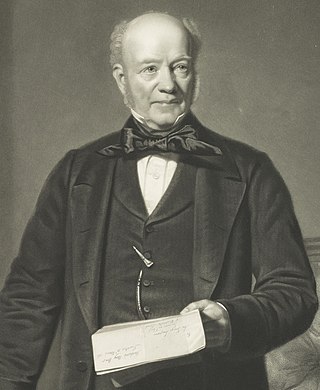
Sir George Simpson was a Scottish explorer and colonial governor of the Hudson's Bay Company during the period of its greatest power. From 1820 to 1860, he was in practice, if not in law, the British viceroy for the whole of Rupert's Land, an enormous territory of 3.9 millions square kilometres corresponding to nearly forty per cent of modern-day Canada.
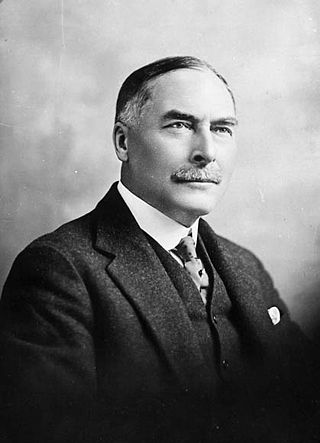
Sir James Alexander Lougheed, was a businessman, lawyer and politician from Alberta, Canada. He served as a senator for 35 years, and held a number of Cabinet positions.
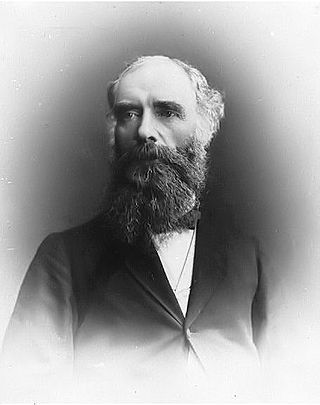
Donald Alexander Smith, 1st Baron Strathcona and Mount Royal, known as Sir Donald A. Smith between May 1886 and August 1897, was a Scottish-born Canadian businessman who became one of the British Empire's foremost builders and philanthropists. He became commissioner, governor and principal shareholder of the Hudson's Bay Company. He was president of the Bank of Montreal and with his first cousin, George Stephen, co-founded the Canadian Pacific Railway. He was elected to the Legislative Assembly of Manitoba and afterwards represented Montreal in the House of Commons of Canada. He was Canadian High Commissioner to the United Kingdom from 1896 to 1914. He was chairman of Burmah Oil and the Anglo-Persian Oil Company. He was chancellor of McGill University (1889–1914) and the University of Aberdeen.

Peter Skene Ogden was a British-Canadian fur trader and an early explorer of what is now British Columbia and the Western United States. During his many expeditions, he explored parts of Oregon, Washington, Nevada, California, Utah, Idaho, and Wyoming. Despite early confrontations with the Hudson's Bay Company (HBC) while working for the North West Company, he later became a senior official in the operations of the HBC's Columbia Department, serving as manager of Fort Simpson and similar posts.

Norman Wolfred Kittson was one of early Minnesota's most prominent citizens. He was best known as first a fur trader, then a steamboat-line operator and finally a railway entrepreneur and owner of thoroughbred racehorses. He was part of the original syndicate that went on to create the Canadian Pacific Railway. Kittson County, Minnesota is named for him. Norman County, Minnesota also was named for him.
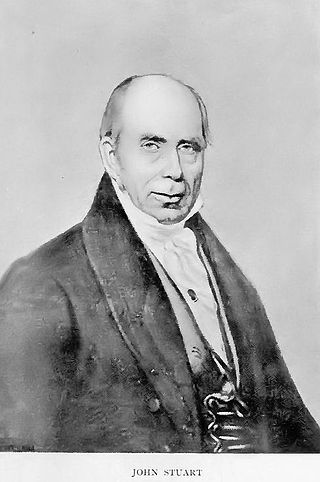
John Stuart was a 19th-century Scottish–Canadian explorer and fur trader. He was a partner in the North West Company and Chief Factor of the Hudson's Bay Company. Stuart is best known as Simon Fraser's lieutenant who participated in his explorations of present-day British Columbia from 1805 to 1808. Fraser named Stuart River and Stuart Lake in British Columbia for his friend. Stuart was the uncle of Lord Strathcona.

Glencoe Lochan is a tract of forest, surrounding a small lake or lochan, located just north of Glencoe village in the Scottish Highlands. It was planted in the 1890s by Donald Alexander Smith, 1st Baron Strathcona and Mount Royal, with trees transplanted from the Pacific Northwest of Canada.
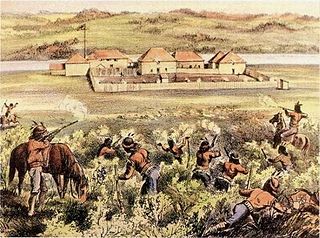
Fort Pitt Provincial Park is a provincial park in the Canadian province of Saskatchewan. Fort Pitt was built in 1829 by the Hudson's Bay Company (HBC) and was a trading post on the North Saskatchewan River in Rupert's Land. It was built at the direction of Chief Factor John Rowand, previously of Fort Edmonton, to trade for bison hides, meat and pemmican. Pemmican, dried buffalo meat, was required as provisions for HBC's northern trading posts.
Richard Charles Hardisty was a Hudson's Bay Company official at Edmonton and a politician in the Northwest Territories, Canada.
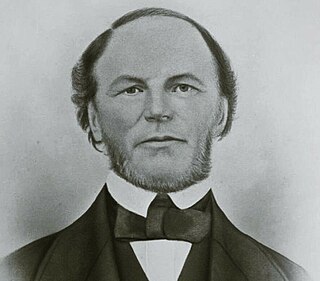
James Murray Yale was a clerk, and later, a Chief trader for the Hudson's Bay Company, during the late North American fur trade, as they were competing with the Montreal-based North West Company and the American Fur Company of John Jacob Astor. During his career, he would negotiate and compete with Americans, French Canadians, Russians, and Indians for market shares. He is best remembered for having given his name to Fort Yale, British Columbia, which became the city of Yale during the gold rush, and later on, became the name of the Yaletown district of downtown Vancouver.

Étienne Lucier, né Lussier, was a French-Canadian fur trader active primarily in the Pacific Northwest. He was hired by John Jacob Astor's Pacific Fur Company and sent to the region to help establish Fort Astoria. Later he became a settler in the Willamette Valley. Lucier attended the Champoeg Meetings and was one of few French-Canadians or "Canadiens" to vote for the Provisional Government of Oregon, an American and Canadian civil authority for the valley. He is credited with becoming the first European descendant farmer within the modern state of Oregon.

Lougheed House, or as it was originally known Beaulieu, is a National Historic Site located in the Beltline district of Calgary, Alberta. Originally constructed in 1891 as a home for Senator James Alexander Lougheed KCMG PC KC and his wife Isabella Clarke Hardisty, the structure has since become an iconic heritage building in Calgary. Lougheed House is operated by Lougheed House Conservation Society, an independent, non-profit society devoted to the restoration and public enjoyment of the historic house and its Gardens.
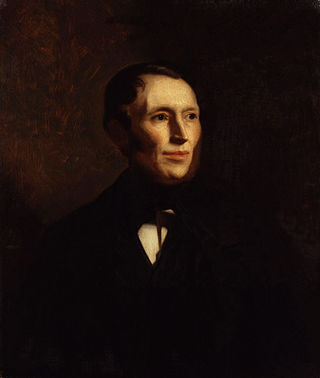
William Kennedy was a Canadian fur trader, politician, and historian.
William Connolly (1786-1848) was an Anglo-Canadian fur trader who oversaw activities in New Caledonia, now located within modern-day British Columbia.
James Isham (1716–1761) was chief factor (master) at both York Factory and Fort Prince of Wales in Canada during the mid-1700s. He kept detailed journals that described life in the region, including flora and fauna that were unknown to people in England at that time. His journals are important historical documents and he is well known to scholars of the fur trade in Canada during the early years of the Hudson's Bay Company (HBC).
Isabella Mainville Ross was the first female registered landowner in British Columbia. She was a Métis woman, the daughter of Joseph and Josette Mainville.















